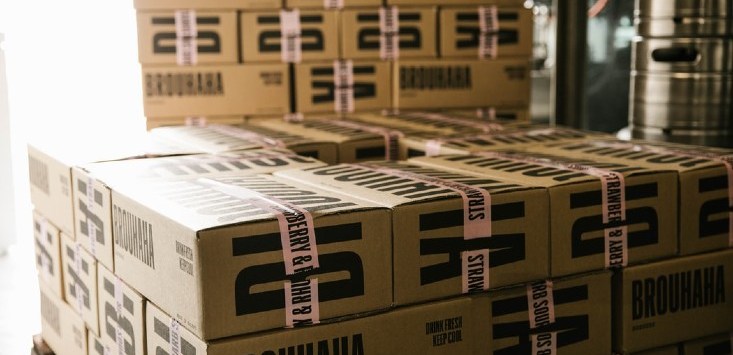
Many retail stores have closed their doors under Melbourne’s stage four coronavirus restrictions.
So how can they keep trading over the next six weeks as they move to click-and-collect and delivery-only?
Unlike distribution centres, retail stores aren’t designed to optimise pick-and-pack processes.
As a result, smart retailers want to reduce the time it takes to pick and pack each order.
So, here are five ways to increase efficiency when you offer click-and-collect, curbside pick-up, or ship-from-store.
1. Don’t track every pick, just the exceptions
If you don’t have dedicated pickers, it’s crucial to expedite the process as much as possible.
Firstly, because you need to get inventory off the sales floor fast, so it’s not accidentally sold (resulting in a cancelled order).
Secondly, it gives retail assistants more time to juggle the responsibility of helping customers over the phone or online.
One way to expedite this is to skip the scanning of items (or entry of a pick quantity for each line item) during the pick process.
Just have staff enter data for the short picks. This reduces the time it takes for each pick and lets them spend more time processing more orders.
What’s more, the analysis of short pick data can be gold for fine-tuning your replenishment strategy, analysing demand trends, and can also improve stock accuracy.
You might also consider picking during off-hours, before the phone starts ringing, to give staff more time to complete pick tasks. That way, you can pull inventory quickly, and pack it later.
2. Have dedicated packers
In a store, picking is best done by staff that work on the sales floor.
Why?
Because they have intimate knowledge of your products (which reduces picking errors) and where to find them (which reduces travel time, especially if a product is displayed in multiple locations).
But packing is different.
Packers need to be trained in how to package products to reduce the likelihood of damage during shipment.
But because they don’t require detailed product knowledge or sales skills, you can often use cheaper resources for this process.
Plus, a dedicated packer will be able to get orders ready for shipment or collection much faster than a staff member who is switching between the back room and the sales floor.
3. Enable staff to pick by location
In a large warehouse, pick tasks are optimised to reduce travel time.
So if you’re picking large volumes of orders, it may make sense to apply this same efficiency to your stores.
There are two ways to achieve this.
1. Automated location picks
With this method, line items from different orders are grouped together.
A single pick task may include just one item, or multiple items from a single area of your store.
And pick tasks can be split across multiple team members. For example, according to their department.
In addition, for larger picks, pick-run optimisation can be used to sort the picklist so it guides the picker from one location to another using the most efficient path through the store.
2. Manual location picks
For smaller store formats, automation may not be necessary.
Instead, you could simply display the location of each item on the picklist so store staff can see which items are in the same aisle or section of the store.
Whether you automate the grouping of pick tasks or manage them manually, remember, every step saved is time staff can use to help make another sale.
4. Don’t require staff to enter a staging location
In an efficient, modern warehouse, every inventory move is tracked.
Warehouse workers follow strict processes and often scan inventory ‘in’ and ‘out’ of each location.
This not only helps with inventory accuracy, but it provides a large data set that can be analysed to improve warehouse efficiency.
But stores are different.
Unlike a warehouse, inventory locations in a retail store don’t have barcodes. And particularly in a smaller store (and often large ones too) staging locations for different types of orders, such as click-and-collect and ship-from-store, are well known and clearly labelled.
Therefore, once your staff have finished picking and packing an order, or group of orders, your system should be flexible enough that they don’t need to scan or enter a staging location for parcels that are ready for collection.
All your system needs to know is that the orders are packed so a status notification can be sent to your customer.
5. Consider dedicated inventory and staff for store fulfilment
Let’s face it, if you use traditional store staff to pick and pack e-commerce orders, it’s not nearly as efficient as the pick-and-pack process in a warehouse.
For store fulfilment to make sense, the benefits of faster and or cheaper delivery have to outweigh this added labour cost.
Some retailers, in a quest for better margins, now use a blended approach. They have ‘hub stores’ which have dedicated space and inventory in the backroom for online order fulfilment.
They also have dedicated staff.
This lets them achieve almost warehouse-like pick-and-pack efficiency, yet reap the benefits of shipping from a location closer to the customer for faster delivery and reduced delivery costs.
In addition, they still retain the flexibility of being able to use store inventory to fill online orders, if needed.
NOW READ: This crisis is different: E-commerce, coronavirus and the looming recession


COMMENTS
SmartCompany is committed to hosting lively discussions. Help us keep the conversation useful, interesting and welcoming. We aim to publish comments quickly in the interest of promoting robust conversation, but we’re a small team and we deploy filters to protect against legal risk. Occasionally your comment may be held up while it is being reviewed, but we’re working as fast as we can to keep the conversation rolling.
The SmartCompany comment section is members-only content. Please subscribe to leave a comment.
The SmartCompany comment section is members-only content. Please login to leave a comment.